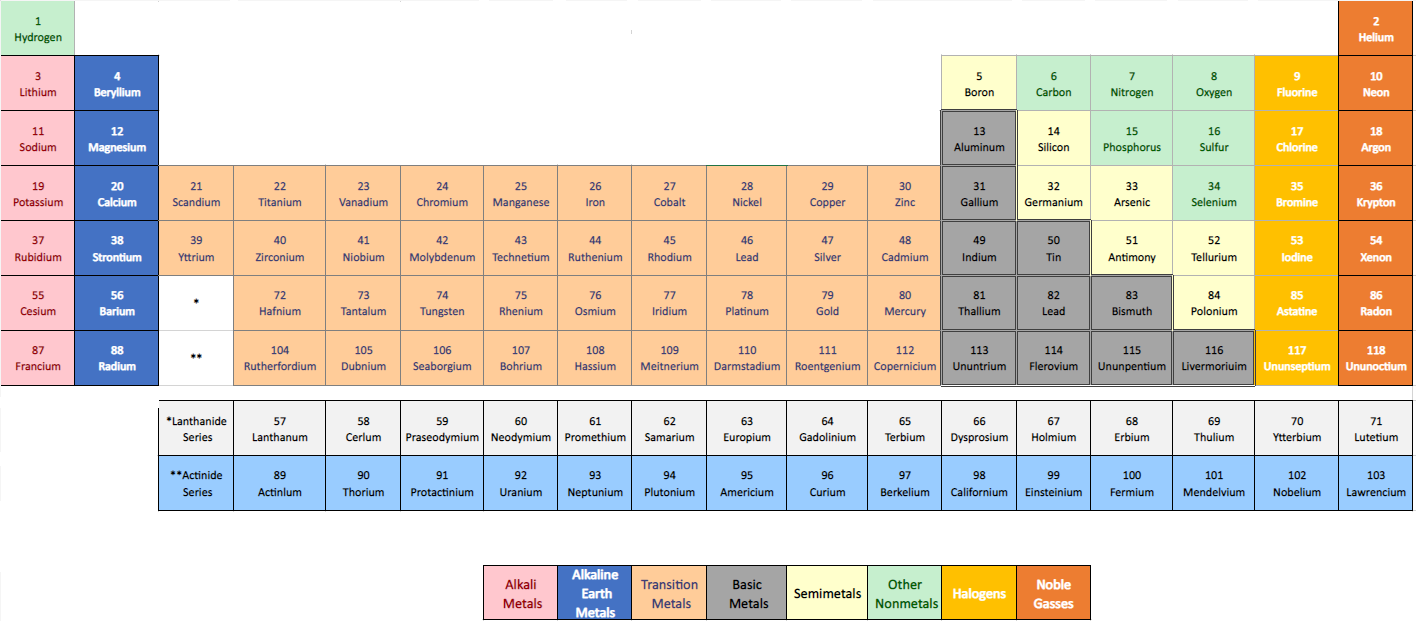1.5 Mining of Commodities
The periodic table (Figure 2) is compilation of the basic elements that make up everything in the universe. These are the primary constituents of all matter and cannot be broken down into simpler form. With the exception of elements like gold or silver, it is rare to find any of these in their pure form. So if the pure form of the element is required, processing facilities are required to get the excavated rock to that form. Mineral processing and metallurgy are complete fields unto themselves. Appendix 1 provides photos of several pure elemental coins as obtained from Metallium Inc and photos of rock samples from The Grand Tour Collection (Kennedy, S. and Dr. James Kaler, 2014).
The elements are generally classified in Figure 2 as metals, non-metals, and inert gasses. Elements with atomic numbers of 21, 39, and 57-71 (Lanthanide Series) are the rare earth elements that are currently sought after for their unique magnetic and optical properties essential for green technologies. They are not actually rare; however, they are difficult to extract. This course focuses on the fact that it is possible to research what commodities are present in an area. In Canada, important metals like copper, gold and silver are generally not found where the majority of the population is. But quarries are a form of mining and if bulk rock is available for gravel and construction, those types of deposits are excavated near the population.


Mineral deposits do exist in Canada that are, or have been, exploited in their almost pure elemental form. An example is the placer deposits of Dawson City, Yukon that contain gold in nugget form. These can be 80 to 90% pure. Most economic deposits of Canada are composed of combined elements and are extracted as industrial minerals, metallic ores, and mineral fuels. An example is Potash which is composed of Potassium (K) and Chlorine (Cl) in an orderly and repeating arrangement. Canada also has deposits of gemstones (example: amethyst near Thunder Bay) which will not be covered here. Only large diamond deposits are considered from this perspective.
For a metallic ore, fuel or industrial mineral to be mineable, the economics must allow for this to be done profitably. The following five conditions will affect the costs and ability to extract the valuable elements:
1. The grade, which is the concentration of the valuable element/mineral.
2. The size of the deposit. There must be enough to justify the infrastructure required to extract the deposit.
3. Location. Accessibility to existing power transmission lines, transportation networks, and other infrastructure can affect the economics of a project.
4. Favourable metallurgy. There must be a way to remove the desired elements from other waste minerals.
5. Mining method. The deposit must be positioned in a way that it can be safely extracted.




